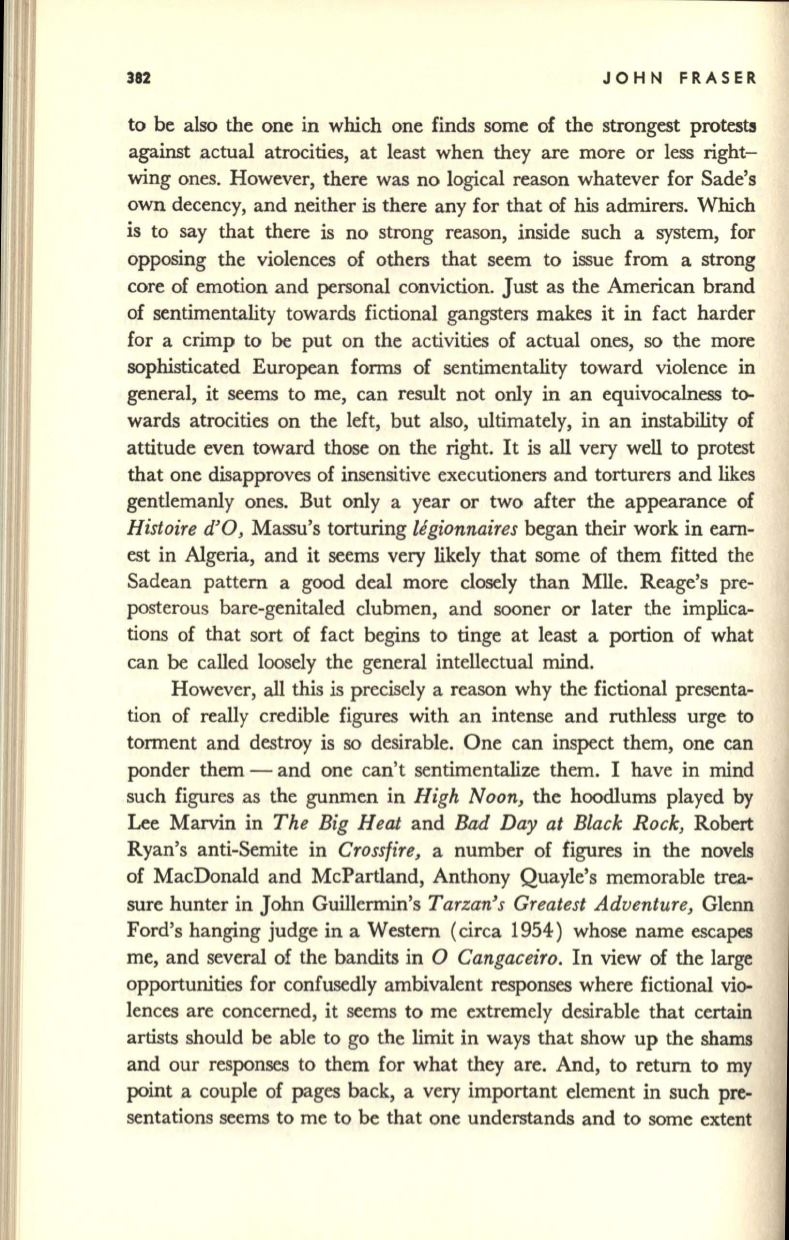
382
JOHN FRASER
to be also the one in which one finds some of tho strongest protests
against actual atrocities, at least when they are more or less right–
wing ones. However, there was no logical reason whatever for Sade's
own decency, and neither
is
there any for that of his admirers. Which
is to say that there
is
no strong reason, inside such a system, for
opposing the violences of others that seem to issue from a strong
core of emotion and personal conviction. Just as the American brand
of sentimentality towards fictional gangsters makes it in fact harder
for a crimp to
be
put on the activities of actual ones, so the more
sophisticated European forms of sentimentality toward violence in
general, it seems to me, can result not only in an equivocalness to–
wards atrocities on the left, but also, ultimately, in an instability of
attitude even toward those on the right.
It
is all very well to protest
that one disapproves of insensitive executioners and torturers and likes
gentlemanly ones. But only a year or two after the appearance of
Histoire d'O,
Massu's torturing
legionnaires
began their work in earn–
est in Algeria, and it seems very likely that some of them fitted the
Sadean pattern a good deal more closely than Mlle. Reage's pre–
posterous bare-genitaled clubmen, and sooner or later the implica–
tions of that sort of fact begins to tinge at least a portion of what
can
be
called loosely the general intellectual mind.
However,
all
this
is
precisely a reason why the fictional presenta–
tion of really credible figures with an intense and ruthless urge to
torment and destroy is so desirable. One can inspect them, one can
ponder them - and one can't sentimentalize them. I have in mind
such figures as the gunmen in
High Noon,
the hoodlums played by
Lee Marvin in
The Big Heat
and
Bad Day at Black Rock,
Robert
Ryan's anti-Semite in
Crossfire,
a number of figures in the novels
of MacDonald and McPartland, Anthony Quayle's memorable trea–
sure hunter in John Guillermin's
Tarzan's Greatest Adventure,
Glenn
Ford's hanging judge in a Western (circa 1954) whose name escapes
me, and several of the bandits in
°
Cangaceiro.
In view of the large
opportunities for confusedly ambivalent responses where fictional vio–
lences are concerned,
it
seems to me extremely desirable that certain
artists should be able to go the limit in ways that show up the shams
and our responses to them for what they are. And, to return to my
point a couple of pages back, a very important element in such pre–
sentations seems to me to be that one understands and to some extent


